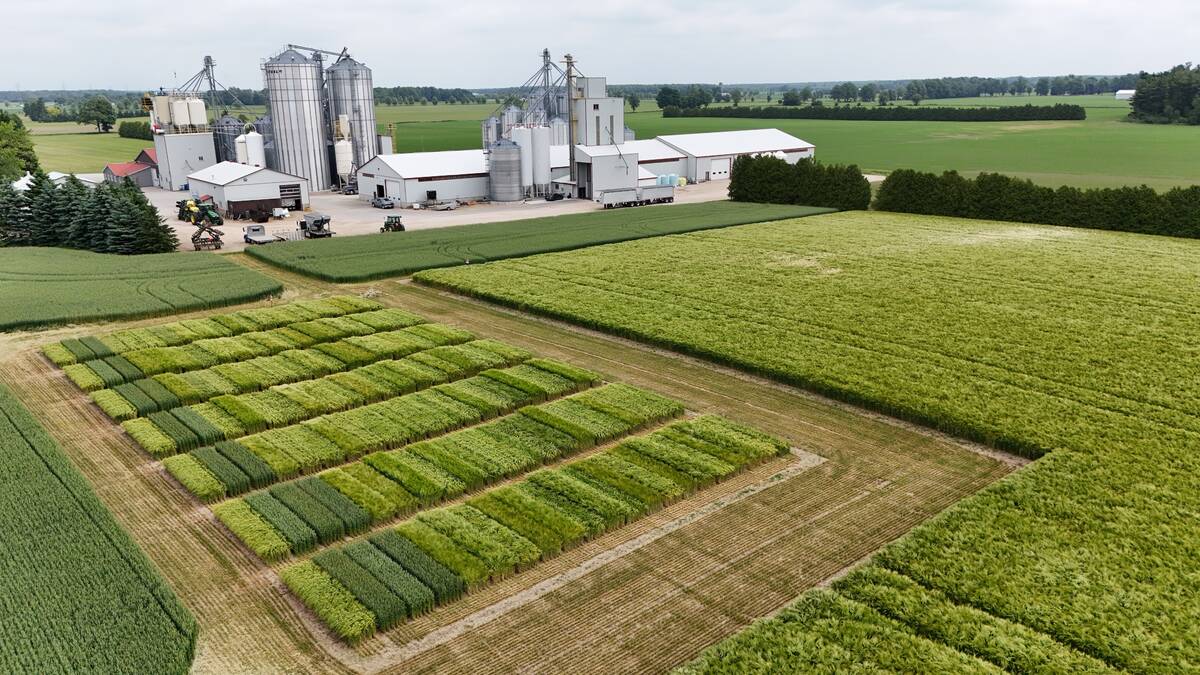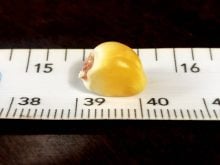Tar spot, the latest corn disease to cross the border, is in Ontario to stay.
Knowing when the risk of tar spot development is high, how to identify the pathogen, and when to take remedial action is now the name of the game.
Why it matters: A new fungal infection in corn could create the need for more management of the crop, with more cost for farmers and demand for fungicide application services.
Read Also

Winter cereals beyond wheat gaining traction
Winter cereals such other than wheat, such as barley, could provide better yield and rotation options for Ontario growers.
Just how to do that was the focus of a session at the 2022 Ontario Agricultural Conference given by Albert Tenuta, field crop pathologist with OMAFRA, with collaborating researchers Darcy Telenko and Damon Smith of Purdue University and University of Wisconsin-Madison.
Why are we seeing more disease?
“I don’t know if we’ll ever really know how it got here, but we need to just admit that it is here. It is endemic,” says Smith, referring to the presence of both Caribbean and Mexican tar spot strains present in Ontario and some American states.
The reason tar spot and other pathogens appear to be emerging with greater frequency is in part the result of general changes in cropping systems over recent decades – specifically, reduced rotation intervals between corn crops and no-till practices. Environmental conditions have trended wetter in many areas of the Midwest due to weather and irrigation, allowing such diseases to stick around longer.
Tar spot has many phases, says Smith. A characteristic indicative of many polycyclic diseases, more buildup of the disease means more repetition, with post-harvest crop residue playing host over the winter.
“You’ll see with fungicides our goal is to hold onto that low period as long as we can, to delay the inevitable,” he says, adding temperature does not appear to have a significant impact on the disease’s development.
Tenuta concurs, noting tar spot did not slow down in Ontario during periods of very hot weather, as was initially anticipated. Indeed, he believes the comparatively wet conditions of Ontario’s Great Lakes region might prove more conducive to tar spot than the comparatively dry Midwest.
Regarding fungicides, Telenko says their effectiveness in combatting tar spot is not necessarily in question. However, because the pathogen can ramp-up quickly and live past the period in which a fungicide can protect the crop – generally no more than a few weeks – chemistry currently offers no silver bullet.
What to do
Predicting the risk of tar spot developing in a given area is the first critical step in managing the disease. Each researcher believes growers should keep up to date on the presence of tar spot in their general area, as well as their individual fields, both in season and historically. Watching the forecast to predict when conditions will be more or less conducive to disease development is also important.
Tarspotter, an app based on a pre-existing agronomy tool called “Sporecaster,” has been developed by Smith and his colleagues to help predict tar spot’s development potential more accurately. The app uses machine learning to generate predicative models based on weather information. Growers can set an “action threshold” to know when action might be required.
If tar spot does appear in a field, Tenuta says it’s possible to determine where it came from by the part of the plant on which it first manifests. Spots appearing in the lower canopy indicate it was already present in the field, while those higher up or seemingly concentrated in a specific side of the field can indicate spores reached arrived on the wind. Studies looking at the relationship between leaf age and susceptibility are also ongoing.
Research findings indicate tar spot inoculum loads can be lowered by removing crop residue, but Damon believes selecting more resistant varieties to be a much better – if not the best – solution. Ontario research shows some hybrids are quite tolerant, others much more vulnerable. Tenuta reiterates, however, that no hybrid appeared to be completely immune.
Fungicides are still a very valuable tool too, despite the ability for tar spot to outlast and appear later in the growing season. Telenko says tests at Purdue indicate positive results are possible with a wide array of products, though some stand out at bringing better yields and overall investment returns. More than one mode of action brings better protection and helps avoid the building of resistance.
Application timing is a challenge, though. Thus far the best time to apply fungicides for tar spot in Wisconsin appears to be from tassel to R1, or VT to R1 in Indiana. What’s optimal year to year can vary. Tenuta adds the need to apply fungicides for other diseases at a similar time is another complicating factor for Ontario growers.
Identifying tar spot
As described by the OMAFRA Field Crop Team, tar spot appears as small, raised, black spots (fungal fruiting structures called stroma) scattered across the upper and lower leaf surfaces. When severe, stroma can even appear on husks and leaf sheaths. Tan to brown lesions with dark borders surrounding stroma can also develop, known as “fisheye” lesions. Identification can be tricky since other diseases such as rust and physoderma brown spot appear similar.















